Understanding Recycled Content
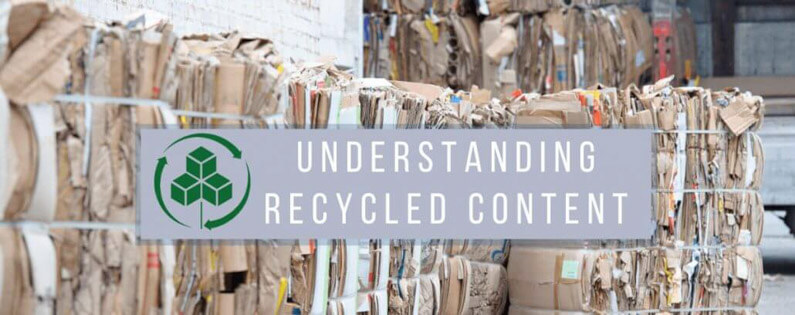
This Blog was written by the PPEC (Paper and Paperboard Packaging Environmental Council)
How do we define recycled content?
Recycled content is generally defined in two ways: pre-consumer and post-consumer. Both are recognized by the International Standards Organisation (ISO) and by Canada’s “Guidelines” for environmental labeling. PPEC does not distinguish between the two in its survey results because both divert used paper material for further recycling and because both are originally made with the same environmental impact at a mill. The only difference is where they come back into the recycling loop.
“Pre-consumer” recycled content includes the corrugated clippings or boxboard trim that is left over when converting board or paper into a box, bag, or carton. This leftover trim is sent from the converting facility (box plant) back to the mill for recycling. “Post-consumer” material, on the other hand, is the formed box, bag, or carton that’s sent for recycling after use by industrial, commercial, institutional, or residential consumers.
Some people argue that post-consumer material is somehow environmentally superior to “pre-consumer” material. We are not aware of any scientific evidence to support this contention. The amount of trim or cuttings (pre-consumer material) at a box plant, for example, is relatively small because maximizing the use of the whole board that has already been paid for is in the best interests of the plant and its customer. The next customer will get some of this trim in the next piece of board purchased, and so on in a continuous recycling loop, so the brand owner or retailer should get credit for this recycled content, in our view. It is all the same board, made with the same environmental impact, just being sent to the mill from a different place in the recycling loop.
There is a further argument for including recognition of this trim or cuttings sent back to the mill from the box plant. And that is that a mill generally needs an extra 10 tonnes of used paper or board to produce 100 tonnes of recycled product shipped out the door. This is because paper fibres shrink in the pulping process. Even though a mill has paid a municipality, a processor, or a broker for 110 tonnes, and technically re-pulped that 110 tonnes, it makes no claim for recycling more than 100 tonnes for recycled content purposes. It does not seem unreasonable, in this light, to claim trim and cuttings as a trade-off for the shrinkage that is not claimed by the mill.
How is recycled content measured?
Recycled content is usually expressed as an average. This could be an average of a mill’s production run (so each customer can label the recycled content of its packaging) or an average over a much longer period. (normally 12 months for mill or industry averages). National average recycled content percentages are determined by dividing the number of tonnes shipped by the number of tonnes of recycled paper or board used in those shipments. For example, in 2018, of the 3.37 million tonnes of paper packaging material made in Canada some 2.11 million tonnes comprised of recycled paper or board (giving an average recycled content of 63%).
What’s the average recycled content of paper packaging made in Canada?
The answer depends on how you define paper packaging and whether you include all shipments (or just domestic or export shipments). For example, there are three major packaging grades: containerboard (used to make corrugated boxes); boxboard (used to make boxboard cartons); and kraft paper (used to make paper bags). Each of them has different technical requirements such as paper fibre length and strength which can have a bearing on whether recycled content is favoured or not. And then there are domestic and export shipments. The overall recycled content produced by Canadian mills has changed very little (in the range of 63 to 64%) between 2010 and 2018. But it’s a different story when you break it out by different packaging grades.
What’s the average recycled content of the various packaging grades?
Kraft paper represents only 9% of Canada’s paper packaging production. It’s primarily made from wood chips and sawmill residues left over from lumber operations with almost 80% of it exported to make multi-wall sacks for industrial uses. For this, you need strong paper fibres. Kraft is the German word for strong. In 2014, one Canadian mill used mostly old corrugated boxes collected from supermarkets and factories or from curbside (what the industry calls recycled pulp) to make bag material, but that mill has since closed. Most of the retail paper bag stock now used in Canada is supplied from the United States. It can be virgin material or 100% recycled content, or anywhere in between. But because it’s not originally manufactured by a Canadian mill, we don’t include it in our survey numbers.
Paper grocery bags are collected from households throughout Canada and normally recycled back into new corrugated boxes rather than separated out and shipped thousands of kilometres to the nearest kraft paper mill for recycling. For more specific environmental information on paper bags go to www.paperpackagingcanada.org
Boxboard, which is used to make cereal or shoe boxes, does not require the strong paper fibres that kraft paper bags do, and in Canada is mostly 100% recycled content. It’s made from a mixture of old corrugated boxes, old newspapers, used printing and writing paper and old boxboard itself, the residential collection of which PPEC pioneered back in the early 1990s. Of the nine mills in Canada making boxboard grades in 2018; seven were 100% recycled content. One mill used a blend of deinked pulp and sawmill residues; the other mill used sawmill residues or virgin fibre and up to 15% recycled. Overall, the average recycled content for domestic shipments of boxboard was 63.5 percent. For more specific environmental information on boxboard go to www.paperpackagingcanada.org
Containerboard is the major packaging grade in Canada and is used to make corrugated boxes to ship heavier products. Its component parts (linerboard and corrugating medium) are mostly 100% recycled content. Eight of the nine linerboard mills and three of the medium mills produced 100% recycled content. The remaining four mills produced a blend of recycled and sawmill residues or virgin fibre for an overall industry average of 77% recycled content in domestic shipments. For more specific environmental information on corrugated boxes go to www.paperpackagingcanada.org
Does using recycled content mean that less virgin material will be consumed?
Yes. In the paper industry, however, this fact comes with some caveats. The industry cannot exist without the introduction of virgin fibre at some point in the paper life cycle. It needs longer virgin fibres to replenish the shorter and thinner fibres that gradually wear out as a result of repeated recycling. Paper fibres can generally be recycled between four and nine times. In other words, to keep the whole recycling loop going (and to produce recycled content in the first place), we must have trees or wood chips and sawmill residues somewhere in the system on a regular basis.
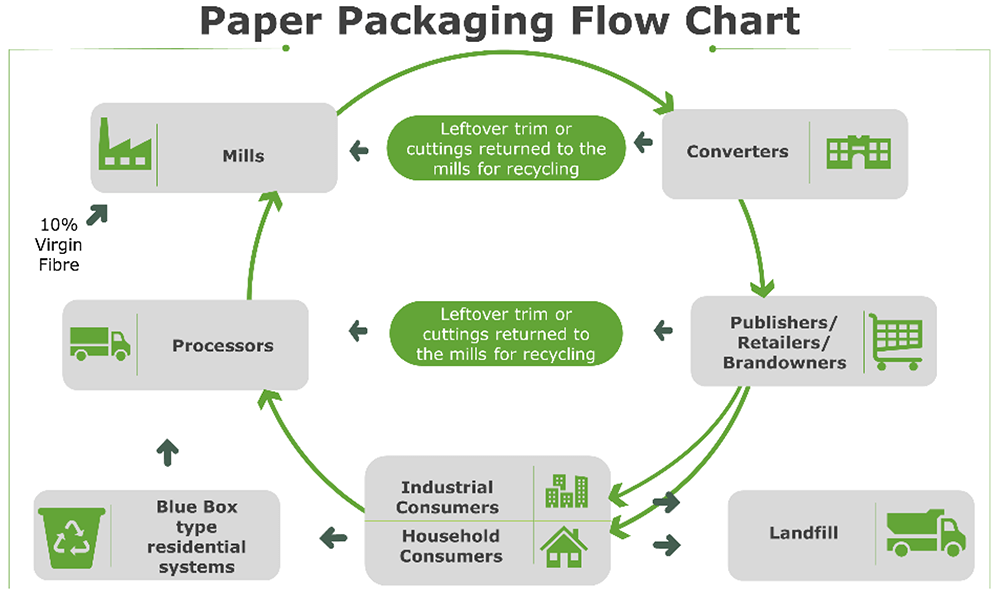
What problems do setting minimum recycled content levels cause?
While it may seem like the “right” thing to do environmentally, the unfortunate reality is that governments and individual companies tend to act in isolation, setting unscientific and competing minimums that suit their perceived (and sometimes narrow) needs. The nightmare scenario for the industry is widely divergent thresholds that bear no relationship to the global supply and demand for paper fibre (both virgin and recycled), and a tendency, driven by politics and public relations more than anything else, to leapfrog over someone else’s number.
If the ultimate goal is to achieve a global balance in the use of the world’s forest resources, isn’t it better to allow countries that no longer have sustainable forests of their own (and there are many), to import their needed virgin material from countries (like Canada) that do have sustainable forests, to keep the whole global paper life cycle going? A couple of the tools to do this are bans on illegal logging and independent third-party certification of sustainably managed forests. PPEC is proud to say that there is no illegal logging in Canada, and that every single one of our mill member companies has achieved what’s called independent “chain-of-custody” certification, or responsible sourcing of raw materials, whether recycled or virgin.
We also question whether, in fact, there is really a need for recycled content minimums for paper packaging in Canada. The overall average is already 71.3% for domestic shipments, far higher than any other packaging material has achieved. And as we have pointed out, most of Canada’s packaging board is already 100% recycled content. There is not much more the industry can do.
And then there are imports of packaging board and converted boxes, bags and cartons. Almost half of the paper packaging that Canadians use is imported, either as raw material or as converted product. Any minimum recycled content levels would have to apply equally to imports to meet fair trade rules and various treaty obligations.
Another argument often advanced for setting minimum recycled content levels is that such “green procurement” grows or encourages markets for recycled materials. This is demonstrably untrue for used paper packaging in Canada.
The markets for old corrugated and boxboard are very mature. Virtually all Canadians now have access to the recycling of these materials and a recent PPEC survey indicated an actual residential capture rate of 65%, over and above what we estimate to be an 85% industrial capture rate for old corrugated boxes nationally. Setting higher recycled content levels than currently being achieved would simply mean that mills would import more used paper and board to meet the minimum thresholds. Capture in Canada itself would be unlikely to increase.
A better and more practical option, in our view, is to ban recyclable paper materials from disposal. In fact, PPEC is calling on provinces to do just that, to ban the disposal of old corrugated containers (used corrugated boxes) from private and public sector landfills. Environmentally, it is the right thing to do (reducing methane and carbon dioxide emissions). Material bans also extend the life of landfills (delaying costly measures to find sites for new ones). And there are also significant operational cost savings to be gained from bans. No good box should go to the dump.
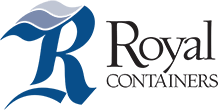
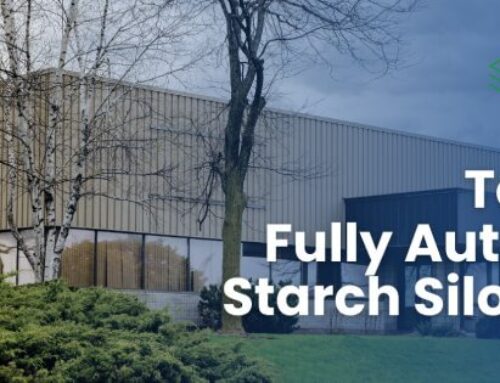
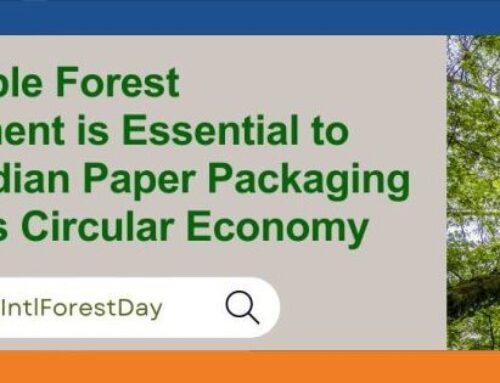


Leave A Comment